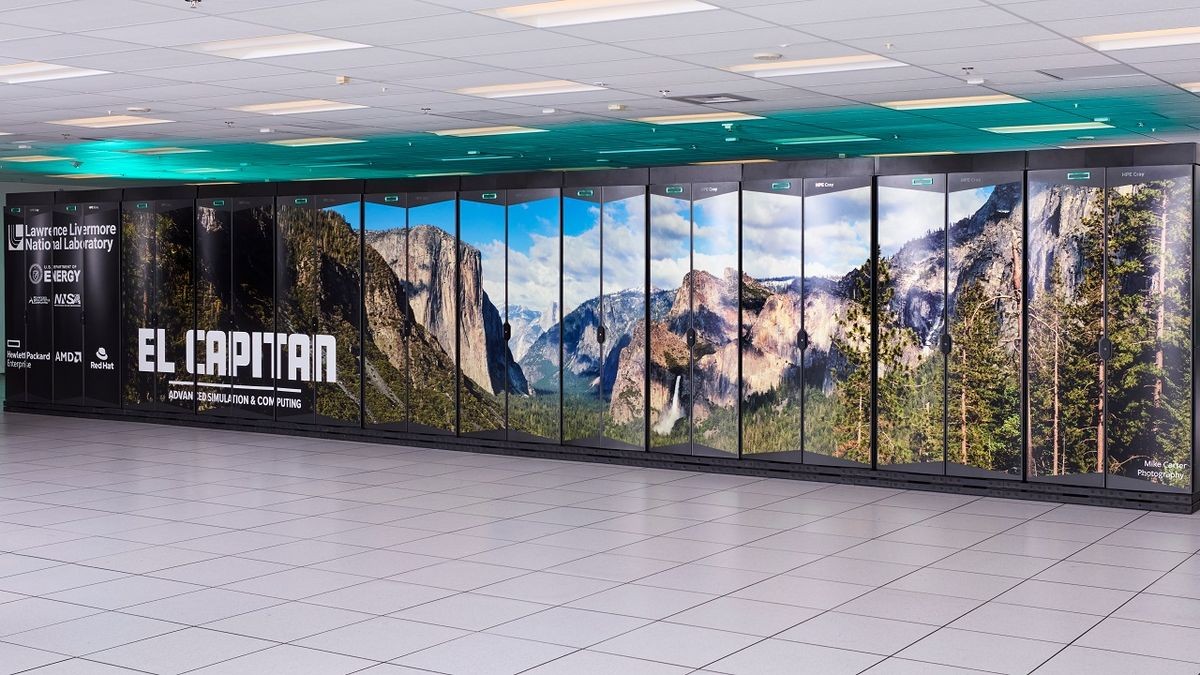
The Lawrence Livermore National Laboratory (LLNL) has unveiled El Capitan, the new champion of supercomputing that delivers an astounding 1.742 exaflops of performance, making it the fastest supercomputer on the planet. This remarkable achievement pushes the previous record holder, Frontier, to second place, while Intel's Aurora system remains in third position.
El Capitan's groundbreaking performance translates to 1.742 quintillion calculations per second - equivalent to performing one calculation every second for 54 billion years. The system achieves this extraordinary feat through its massive array of 44,544 AMD MI300A processors, combining both CPU and GPU cores in a single package.
The architecture features 11,039,616 compute cores spread across the system, with each MI300A chip containing twenty-four Zen 4 CPU cores integrated with CDNA 3 graphics and 128GB of HBM3 memory. The complete system includes 5.4 petabytes of main memory and an advanced 'Rabbit' storage subsystem.
Built by HPE using their Shasta architecture, El Capitan will serve the National Nuclear Security Administration (NNSA) in modernizing the US nuclear arsenal. The system will run simulations for nuclear stockpile maintenance, eliminating the need for underground detonations, and support the development of new ICBM designs.
The supercomputer consumes over 35 megawatts of power at full capacity - enough to power a mid-sized city - while achieving 58.89 Gigaflops per watt, ranking 18th on the Green500 list of energy-efficient supercomputers.
LLNL officials noted that El Capitan represents exceptional value, describing it as the most cost-effective system at this performance tier. The $600 million project, approved in 2019, has exceeded expectations and demonstrates AMD's growing dominance in high-performance computing.
While El Capitan's theoretical peak performance reaches 2.746 exaflops, its real-world measurement of 1.742 exaflops still puts it comfortably ahead of its competitors. The system will undergo one final benchmark test before transitioning to classified operations, where it will tackle both traditional high-performance computing and artificial intelligence workloads.
This achievement marks a defining moment in supercomputing history, showcasing unprecedented computational capabilities that will advance scientific research and national security objectives.